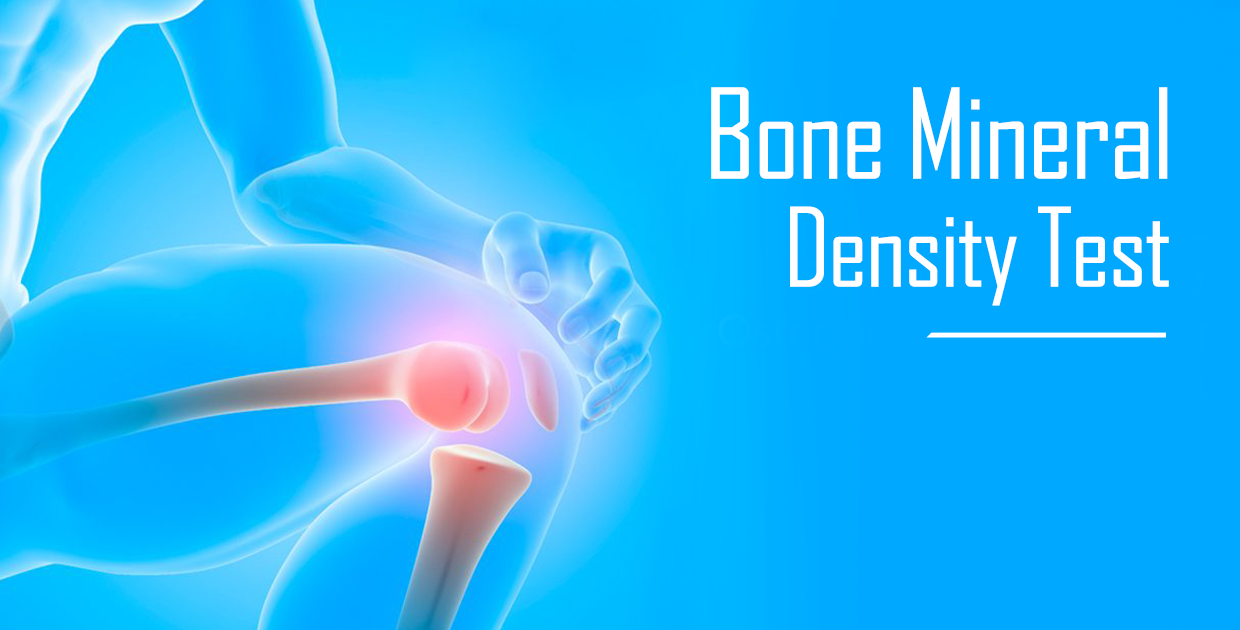What is Bone Mineral Density (BMD)?
It is a measure of the amount of minerals (mainly calcium) in a defined area of bone tissue and is used as an indicator of bone health and as a predictor of future fracture risk. BMD tests are performed using a specialized machine called a densitometer, and results are often compared to those of a healthy young adult to determine the individual's bone health status. Low BMD levels increase the risk of osteoporosis and fractures, while high BMD levels indicate good bone health. BMD testing is recommended for people over 50 years old, or for those at risk of osteoporosis due to lifestyle, medical or family history.
What does Bone Mineral Density Test do?
Bone Mineral Density (BMD) testing is considered the most sensitive and accurate method for diagnosing osteoporosis. Osteoporosis is a condition in which the bones become fragile and prone to fractures due to decreased bone density. BMD testing uses specialized equipment to measure the amount of minerals in a defined area of bone tissue, providing a precise measurement of an individual's bone density. This measurement is then compared to the average bone density of a young, healthy adult to determine the individual's bone health status. The results of the BMD test help determine the risk of osteoporosis and future fractures, and are an important tool for healthcare providers to make recommendations for preventing and treating the condition. BMD testing is widely recognized as the most effective method for diagnosing osteoporosis and is considered essential for managing this condition.
What is Osteoporosis?
Osteoporosis is a skeletal disorder characterized by compromised bone strength predisposing a person to an increased risk of fracture especially of the spine and hip. Osteoporosis represents an increasingly serious health and economic problem around the world. It is a leading cause of morbidity and mortality in older people. There are about 9 million fractures worldwide per year due to osteoporosis. It affects both sexes and all ages. Globally, 1 in 3 women and 1 in 5 men over the age of 50 will have an osteoporotic fracture. This is a silent disease which shows no clinical symptoms until a fracture occurs.
What are risk factors for osteoporosis?
These are some of the risk factors for osteoporosis: aging, early menopause, Asian race, family history of hip fracture, low body weight, long-term corticosteroid therapy, poor diet lacking calcium and vitamin D, lack of exercise, smoking, and alcohol consumption.
Why should get BMD test?
Early detection and prevention of osteoporosis and its related fractures is crucial for reducing the risk of serious complications and maintaining good health. This can be achieved through regular bone density testing, especially for individuals who are at higher risk due to the factors mentioned above. In addition, a balanced diet rich in calcium and vitamin D, regular exercise, quitting smoking, and reducing alcohol consumption can help prevent or slow the progression of osteoporosis. If diagnosed early, appropriate medical treatment and lifestyle modifications can help maintain or improve bone health and reduce the risk of fractures.
